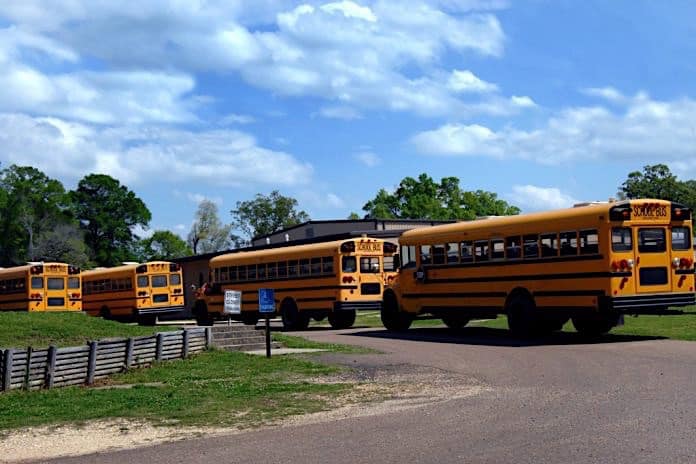School buses will be subject to a 16-percent reduction in carbon dioxide emissions and fuel consumption by the 2021 model year after the U.S. Environmental Protection Agency and National Highway Traffic Safety Administration jointly published their latest proposed rules for medium- and heavy-duty vehicles.
The Phase 2 regulations claim they will cut greenhouse gases by 1 billion metric tons, will conserve 1.8 billion gallons of oil and will reduce fuel costs by $170 billion over the lifetime of vehicles sold under the program.
Diesel engines would also need to cut carbon dioxide emissions by 4 percent by 2021, compared to Phase 1 EPA regulations that went into effect last year and extend beyond the 2018 model year. EPA said the stricter engine emissions regulations could be met by using combustion optimization, improved air handling, reduced friction within the engine, improved emissions after-treatment technologies, or waste heat recovery.
The proposal extends with “minor revisions” a credit program implemented under the phase one rules to allow engine and vehicle manufacturers to certify their products that do not yet meet the new standards and to offset them with those that exceed the standards.
Cummins Inc. said it supports the proposal, with Dave Crompton, vice president of the company’s engine business calling it a “win-win for both customers and the environment.” Cummins was the first engine manufacturer to certify an engine that meets the 2014 GHG standards, which aim to reduce carbon dioxide emissions by 225 tons per mile and increase fuel economy to 22.1 mpg for Class 6 and 7 vehicle and 373 tons per mile and 21.8 mpg for Class 2b through 5 vehicles.
“We are pleased that the new proposal builds upon the Phase 1 framework that aligns technological advances and industry success,” he added in a statement.
For example, EPA and NHTSA said the operator of a model-year 2027 heavy-duty diesel truck would recoup the increased costs for the new technology in only two years of operation. The agencies added that they are proposing an extra year of lead-time to assist small businesses in meeting the standards, as well as less stringent standards and reduced compliance requirements.
EPA and NHTSA also said vocational vehicles, the category school buses fall under along with transit and shuttle buses, utility trucks and refuse haulers, represent a fifth of the total medium- and heavy-duty vehicle fuel consumption.
As for alternative fuels, NGVAmerica also called the proposal a “win-win,” at least it has that potential.
“Under the Phase 1 rule, natural gas trucks and buses are already delivering lower fuel costs and reduced emissions to fleet operators and consumers nationwide,” said Matthew Godlewski, president of the advocacy organization. “We have appreciated the administration’s collaborative effort in developing this proposal. We look forward to working with EPA, NHTSA and the administration to finalize a Phase 2 rule that will create new opportunities for fleets to use natural gas to further reduce fuel costs and emissions, while increasing energy security.”















